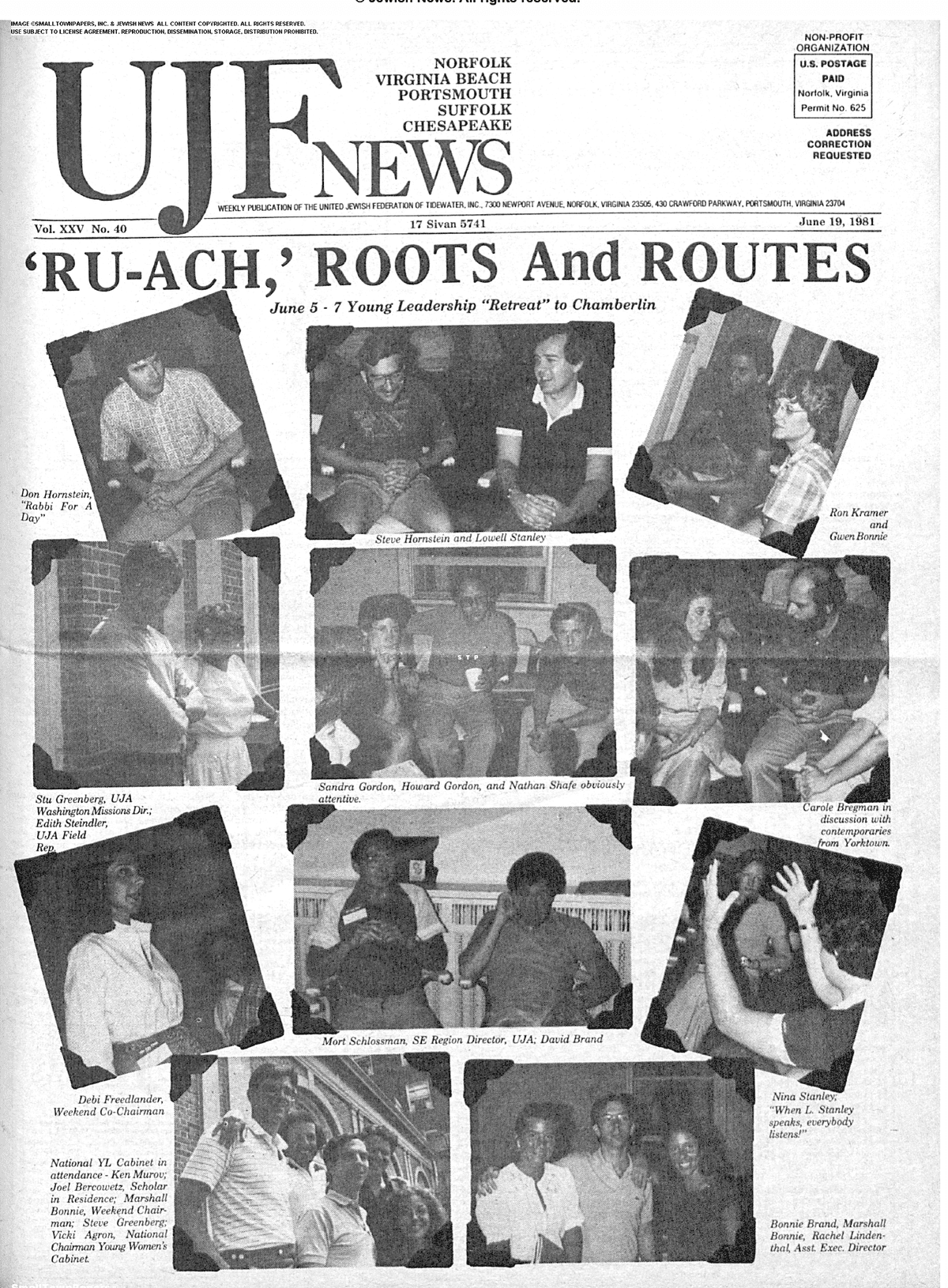In the paper’s 75-year history, surprisingly few have served as editor. In fact, many of the first editions list no editor at all, but rather the executive of the Norfolk Jewish Community Council (in one instance Sydney S. Abzug) and in others, just editorial boards, comprised of men (they were all men) such as Stanley Gross, a local advertising executive.
Two stand-out editors who changed the course of what was once a four-page newsletter, are Marilyn Goldman and Reba Karp. Both happen to be my mentors. In 1980, Marilyn hired me at Tidewater Virginian, a magazine once owned by the area chambers of commerce, and now known as Virginia Business. That’s also where I first met Reba, who would occasionally write for the publication. I began my stint as editor when Reba retired, following her directions on myriad aspects of the paper.
It was 1967 that Marilyn Goldman began working at the paper, then Jewish Community Council NEWS. In 2014, for a community commemorative issue, she wrote:
“Like many women of my time, I stayed home raising my three children and wrote freelance for several publications. Ephraim “Fri” Spivek probably saw my work and called me to come in for an interview at the council’s office on Spotswood Avenue in Norfolk. Whatever arrangements were made dealing with a job description, hours, and pay are lost in memory. But I do recall the council’s small office space, which meant that I would work at home laying out the paper in my kitchen.
“Fri and I quickly developed a close working relationship, in which I greatly benefited from his intellect and worldview. He accepted my insistence on a policy that included the wider Jewish community, even outside when it was appropriate, although, it was not to everyone’s satisfaction. Still, he never told me to drop an editorial and dealt with whatever controversy arose without involving me. I wasn’t totally immune, however, after each edition I received plenty of irate calls, and sometimes a compliment. It was all part of the job.” (Note: Not much has changed.)
Goldman’s ad agency husband, Dan Goldman, believed the paper should include advertising. “It has an upscale market to attract advertisers,” he said, “Advertising adds interest, readership, and eventually will pay for the publication.’’ While these were all valid arguments, each time Goldman approached the subject to the Federation, it was rejected. After nearly two years, the Federation agreed on the proposal. Goldman made the news a front-page headline: Advertising Acceptance Milestone for UJF News. The story was even picked up by the national wire service JTA, the Jewish Telegraph Agency. And, with that, the Goldmans had impacted, to this day, the staying power of the paper.
Goldman’s last issue was 12 pages in 1970—a jump from the original four. In that last issue, of Goldman, Spivek wrote: She has crossed swords with many on her concepts of how a Federation-owned newspaper can escape, be independent, and still serve the community in which it’s published….”
Reba Karp came and went a couple of times as editor, but stayed the longest in the chair.
Karp first arrived as editor and put out the first UJF News in tabloid format on Oct. 6, 1973. In 2014, she wrote: “I didn’t stay very long that first time, as I was to leave for other jobs twice before I returned for the third time on May 28, 1978. This time I stayed and remained as editor of the UJF Virginia News until I retired in 2004.”
Like Goldman, Karp took on challenges, embarking on ambitious projects of her own design. In Sept. 24 1984, UJFT published its first four-color magazine, Renewal. “In the beginning, we had six issues a year, plus a newspaper every other week,” she wrote.
Karp added pages, increased frequency, added color, and created the Renewal magazine. Today she is editor emeritus for Jewish News.
In 2004, like Marilyn Goldman, I received a call from the Federation’s executive vice president. My first reaction when Harry Graber suggested I become editor was “absolutely not.” Harry was not easily dissuaded. A couple of meetings later, I was excited about the prospect and was working with Reba on a transition.
Following in the footsteps, or editorial marks, of Marilyn and Reba, I’ve also attempted to keep the community’s paper moving forward. Jewish News is now full color and we’ve increased the number of pages of each issue, generally based on advertising. In 2012, we launched the Jewish News website, which includes an e-edition. The Hal Sacks Jewish News Archives was established in 2016. And, at the start of the pandemic, we began emailing the issue the Friday before publication date.
The editor’s job for this publication is about more than marking up copy and assigning articles. The question is, Who’s next?
–Terri Denison

